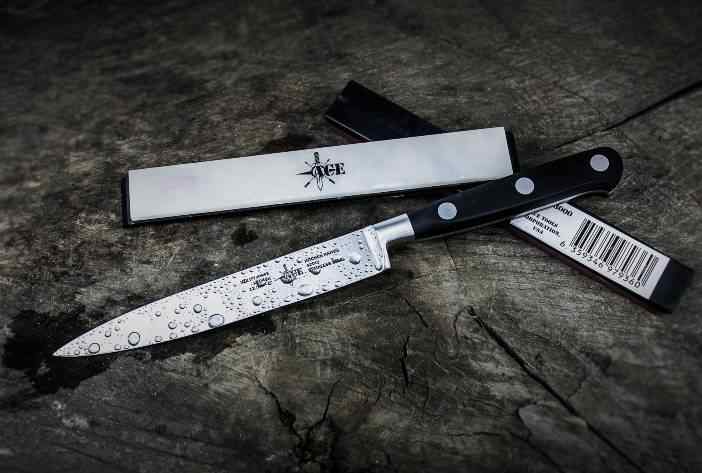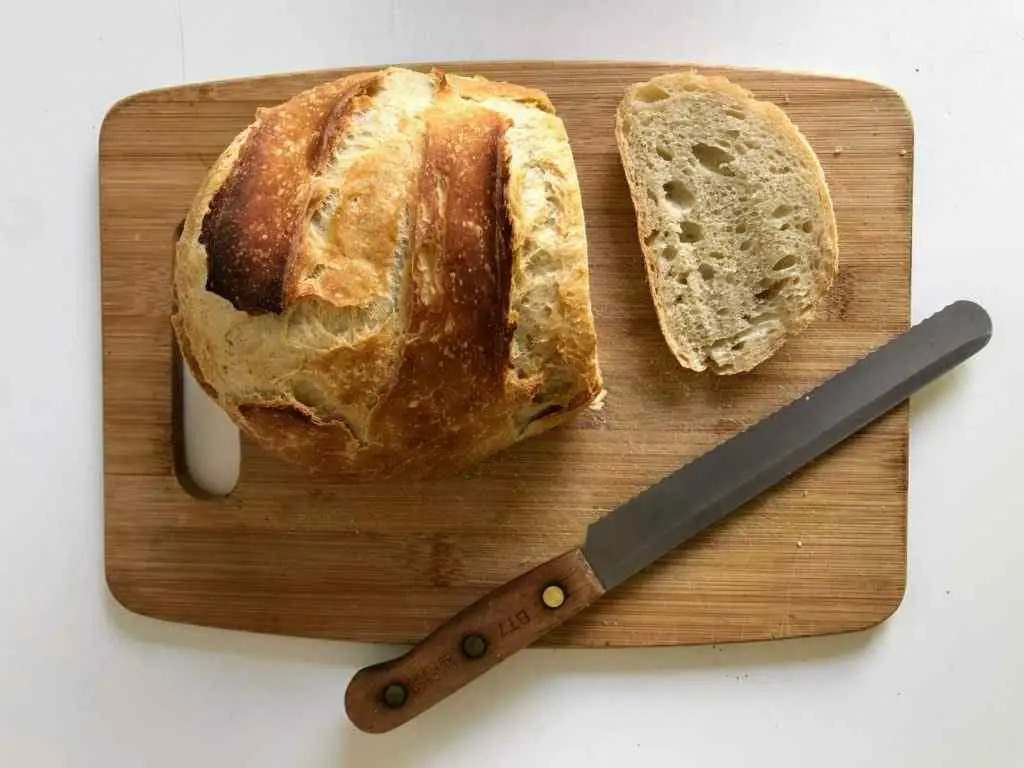There are things to never do with your kitchen knife and they are in the manuals you usually ignore. Every kitchen utensil has a manual. At no time can your knives be underutilized as they are used every time. Their constant usage emphasizes the importance of knowing the wrong usage and handling of a knife.
Mistakes are inevitable in every cooking process. How about mistakes that lead to domestic accidents? Herein, lies another importance why you should use your knife rightly. The following are recommended things to never do with your kitchen knife at home.
I will advise you to adhere and comply to avoid accidents or damaging your knives. Before you proceed, let’s take a quick look at the different types of home knives that exist.
What Are the Types of knives Available?
- Chef Knife
- Utility Knife
- Carving Knife
- Pairing knife
- Bread Knife
- Butcher Knife
- Boning Knife
- Filleting Knife
- Salmon Knife
- Santoku Knife
- Vegetable knife
- Santoku Knife
- Tomato Knife
- Nakiri Knife
- Peeling Knife
- Dinner Knife
Every Part of a Knife You Should Know
Knives can be very dangerous if they’re not properly used or are not handled with care. They can cause disfigurement and even death. A knife is also a kitchen essential and being familiar with the parts of a knife will help you identify the different types of knives available and how to use them the right way.

What Are the Things to Never Do With Your kitchen knife?
1. Never leave your knife with food residue
You can easily relate, right? Quit the habit of neglecting that stain on your knife. No matter how tiny the stain. Clean all stains or wash then dry them before returning your knife.

2. Don’t cut with a wrong size knife
Jane one afternoon misplaced her bigger knife. Then decided to use a breadknife to peel a tuber of yam. In the process, the handle broke. Sad.
Knowing the right knife size for any cut is key in any cooking process and it helps in making sure the knives last longer. You cannot use a bread knife to peel yam as Jane did or use a bigger knife for your butter? It is ridiculous.
These are some things you should consider when choosing the size of your knife
- Choose a blade that is corresponding to the food item you’re cutting.
- Certain undertakings require an adaptable sharp edge, while others need a firm one.
- The sharp edge can make your work a lot simpler or make it harder.
3. Don’t return your wet knife to the plate rack
Knives are metallic and metals are prone to rust when in contact with water. Don’t get this wrong. This is not to stop you from washing or cleaning your knives. But here is the deal, after washing, remember always to dry them before you return to your plate rack or knife pack.
You can read more about the scientific reasons why metals are prone to rust due to water.
4. Avoid using a blunt knife
In moments of choppings, cuttings, and slicings, the usefulness of all your knives rests on the sharpness of your blades. The beauty of using a knife lies in its blade.
What then happens if the blade is not sharp. The knife loses its purpose. It becomes useless. However, your sharp knives can cause damage if handled wrongly. This is why you must check how to handle a knife properly.
Using a blunt knife will not only slow your cooking process but make you lose interest in the very dish you wish to prepare.

5. Don’t expose your knives
As it is important to keep your knives sharp, always keep your knives properly safe. They are a catalyst for minor domestic accidents. To avoid such keep them protected and safe. By doing this, you are achieving two things; making sure the knives last longer and secondly, keeping your family and friends at home safe.
While you can get a magnetic strip for your knives, ensure you also keep them in the right place in the kitchen. It could be in the cabinet or drawer.
SEE: Lessons Children Learn From You In The Kitchen
6. Don’t scrape food with the sharp edge of your knife
A whole lot of people are actually guilty of this. In fact, it is one of the wrong things to do with your kitchen knives. As sweet and easy as this might seem most of the time, it can damage your knife. Sometimes in an instant and sometimes in a gradual process.
What about the surface on which you’re scraping something off? Have you thought about the fact that a knife handle could break and injure you? There are many possibilities of damaging your knife or injuring yourself by scraping with it. So, avoid it at all costs.
7. Don’t wash your knife with a dishwasher
Cleaning your knife after usage is good but cleaning it in the proper way is best. It is usually recommended never to use a dishwasher to clean your knife after use. They are not best for knives due to the texture of the detergent in the dishwasher. It can damage the blade of the knife and the handle might fall off in the process.
With your hands, while being careful, make use of soft sponges and soap to do justice. Avoid using metallic sponges.
8. Avoid dropping your knife
Hey do not lose focus, this is not English class where a dropped knife means good luck. Dropping your knife frequently can damage the metal part of the knife. A major part of your knife is made of metal and when dropped it can get bent or rough.
9. Never try catching a falling knife, it’s dangerous
In an attempt, to save your precious expensive kitchen knife when falling, you may find yourself rushing to catch it. This is a terrible mistake that has injured a lot of people while in the kitchen.
While you should avoid letting your knife drop to the ground, some things are just inevitable sometimes. And one of them is falling knives. Any part of your body is more precious than your expensive kitchen knife. Therefore, please never rush to catch it when falling. Let it be.
10. Always keep your knives sharp
Most often, even a knife which is not sharp is more dangerous than the sharp one. Do you know why? When you’re using a dull knife, it takes a lot of effort to cut through a food item. In doing so, you could slice through your fingers too since a lot of pressure is on the knife. Or get the knife handle broken. None of these or any other is good.
11. Stop using your kitchen knives on the wrong cutting board
I’m pretty sure a lot of people are not even aware that not all cutting boards are suitable for their kitchen knives. Most of these boards do more damage to your kitchen knives than good. In other to reduce the damage a cuttings boards might cause your kitchen knives, I will recommend plastic and wood cutting boards.
12. Use your kitchen knife only for its purpose
Every knife is built for a specific purpose. This is why we have different types of knives which I listed at the beginning of this article.
The common practice is using your knife as a screwdriver. Stop it. Kitchen knives are not meant for driving screws. They’re not box cutters. They’re not can openers. Break the habit of using them as one.
13. Don’t use your kitchen knives when your hands are wet
Even without any explanation, it’s easier to know this is a dangerous thing to do. When your hands are wet, the knife handle can slip off your hands and cause injury to you or cut the food item the wrong way. Ensure your hand is super dry before handling any of your kitchen knives.
14. Stop sharing your knives
You shouldn’t share your knives for any reason. This doesn’t tag you stingy or you don’t love to share. Not everything is meant to be shared. And kitchen knives are one of them. Not everybody knows how to handle knives properly.
You will be saving them and also your knife by not sharing it with them. However, if you’re so sure about the person, you can share. The idea is to be careful who uses your kitchen knives.
15. Are you gripping your kitchen knives the right way?
A knife shouldn’t be something you hold or grip anyhow, at least for your safety in the kitchen. You shouldn’t grip as if you’re having a warm handshake with a business partner or colleague.
How do you grip your knife correctly? It is advisable you use a pinch grip. This means holding your kitchen knife on the handle still, but up toward the blade, pinching the top of the blade with your thumb and pointer finger.
FAQs
What is the recommended specification of a knife?
The sharpness of a knife must abide by these specs; the blade edges should be with a 20-degree point on each side of the bleeding edge. In the event that you work with numerous delicate fixings, you might need to hone your blade to 15 degrees for every side.
What can damage knives?
A lot of things can damage knives such as never washing them in the dishwasher, leaving them in the sink, putting them away wet, storing them unprotected, and using glass cutting boards.
Conclusion
Your kitchen has many knives that perform different tasks. From paring knives to serrated bread knives, you have them all. But it’s not just the number of knives that matters but how you use them.
If you are looking for information on what shouldn’t be done with your kitchen knives, then you’re in luck. Highlighted above are the things to never do with your kitchen knife.
To help you have a safe and great kitchen experience every time you choose to use your kitchen, here are the top kitchen safety tips you should know. You can also read more guides on Cheffist.
I hope you found this guide helpful. Thanks for reading.






